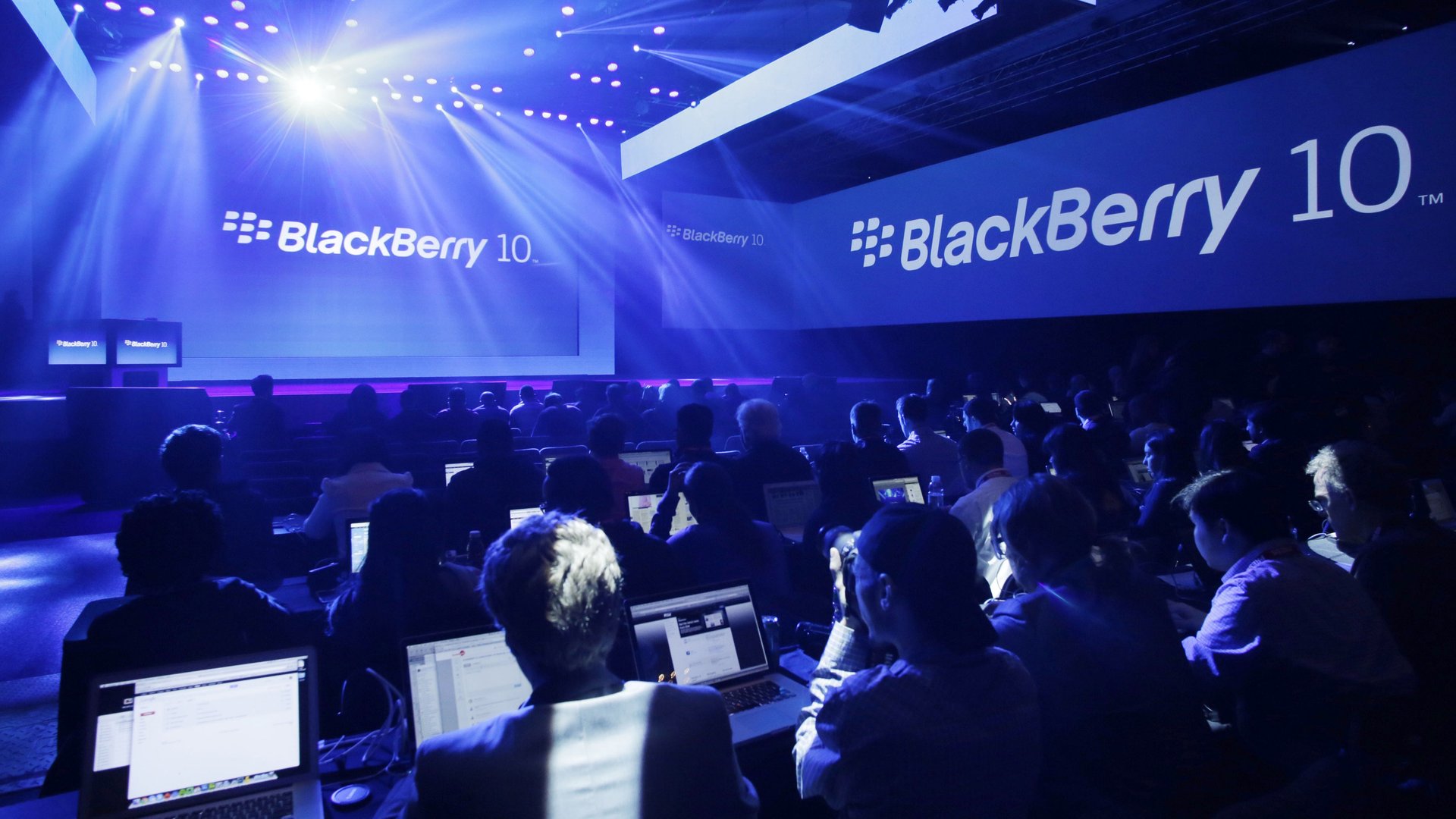RIM renames itself BlackBerry: Here’s how that name came to be
Research in Motion just announced that it’s changing its name to the company’s signature product: BlackBerry. (Oh, and it also announced some new phones.) The rebranded BlackBerry will trade under the ticker symbols BBRY in New York and BB in Toronto.


Research in Motion just announced that it’s changing its name to the company’s signature product: BlackBerry. (Oh, and it also announced some new phones.) The rebranded BlackBerry will trade under the ticker symbols BBRY in New York and BB in Toronto.
For all the flak that the brand receives nowadays, BlackBerry was once considered one of the most effectively christened products in the technology industry. The name was chosen by Lexicon Branding, the California-based firm known for naming Procter & Gamble’s Swiffer (a cleaning product), Verizon’s FIOS (high-speed internet), Apple’s PowerBook (a laptop), Coca-Cola’s Dasani (a bottled water), and other brands that have become well known in the US.
It was 1998, and executives at the company then known as RIM were planning to name their new email device—not yet a phone—PocketLink or MegaMail. (Previous iterations had been called the RIM 950, RIM 960, and so on.) “At that time, they were going up against the pagers, and everybody had a pager,” recalled Lexicon president David Placek in the book BlackBerry Planet. “You need to have a really distinctive name. And let the operating companies, like AT&T, let them have the more conservative and descriptive names.”
Looking at the new gadget, Lexicon employees fixated on the—for that time, ground-breaking—keyboard and began to draw metaphors for it. They wanted a name that would evoke joy, countering the stress typically associated with work email. The keyboard, with its stippling of little buttons, vaguely resembled the skin of a fruit. A process of free association proceeded in that direction, as recounted in a New Yorker profile of Lexicon:
On a Mind Map, someone wrote “strawberry.” Then somebody wrote beside it, “Strawberry is too slow.” Placek pronounced the word—”Str-a-a-a-w-w-berry”—drawing it out. “This technology is instantaneous,” he said.
On the map, someone else wrote, “blackberry.” “I’d love to be able to say I saw it on the wall and said, ‘Wham, this is it! I’m a genius!'” Placek told me. But the process by which a name is selected from hundreds of candidates can be arduous, and often comes down to a combination of instinct, abstract reasoning, and the client’s idiosyncratic demands. “Blackberry” went into a list of about 40 potential names that Placek took to Research in Motion’s offices in Waterloo, Canada. In the next few weeks, he and the RIM executives narrowed the list, and eventually talked themselves into the name Blackberry.
Shortly before the device launched, it was decided that both b’s in BlackBerry would be capitalized in order to emphasize a letter that Lexicon’s in-house linguists said was considered “reliable” across many languages.
Engineers at RIM weren’t thrilled with their product being named after a fruit, but the name was a hit among consumers when it was revealed in 1999, and the BlackBerry grew to become the world’s most popular smartphone before losing out to Apple’s iPhone and Samsung’s various Android devices.
Now, as BlackBerry née Research in Motion, attempts to make a comeback, it’s betting that, if nothing else, it has the right name.